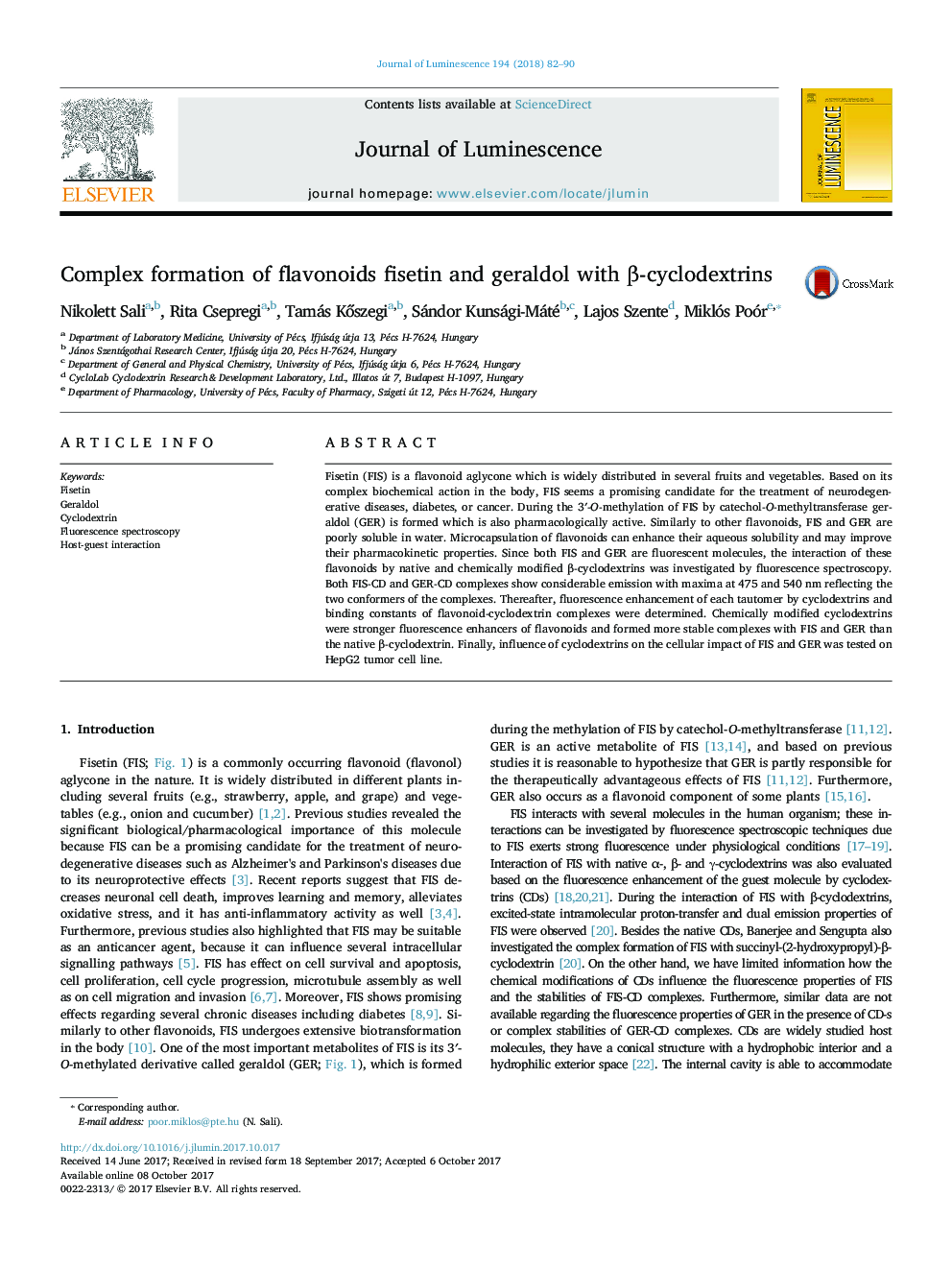| Article ID | Journal | Published Year | Pages | File Type |
|---|---|---|---|---|
| 5397341 | Journal of Luminescence | 2018 | 9 Pages |
Abstract
Fisetin (FIS) is a flavonoid aglycone which is widely distributed in several fruits and vegetables. Based on its complex biochemical action in the body, FIS seems a promising candidate for the treatment of neurodegenerative diseases, diabetes, or cancer. During the 3â²-O-methylation of FIS by catechol-O-methyltransferase geraldol (GER) is formed which is also pharmacologically active. Similarly to other flavonoids, FIS and GER are poorly soluble in water. Microcapsulation of flavonoids can enhance their aqueous solubility and may improve their pharmacokinetic properties. Since both FIS and GER are fluorescent molecules, the interaction of these flavonoids by native and chemically modified β-cyclodextrins was investigated by fluorescence spectroscopy. Both FIS-CD and GER-CD complexes show considerable emission with maxima at 475 and 540 nm reflecting the two conformers of the complexes. Thereafter, fluorescence enhancement of each tautomer by cyclodextrins and binding constants of flavonoid-cyclodextrin complexes were determined. Chemically modified cyclodextrins were stronger fluorescence enhancers of flavonoids and formed more stable complexes with FIS and GER than the native β-cyclodextrin. Finally, influence of cyclodextrins on the cellular impact of FIS and GER was tested on HepG2 tumor cell line.
Related Topics
Physical Sciences and Engineering
Chemistry
Physical and Theoretical Chemistry
Authors
Nikolett Sali, Rita Csepregi, Tamás KÅszegi, Sándor Kunsági-Máté, Lajos Szente, Miklós Poór,
